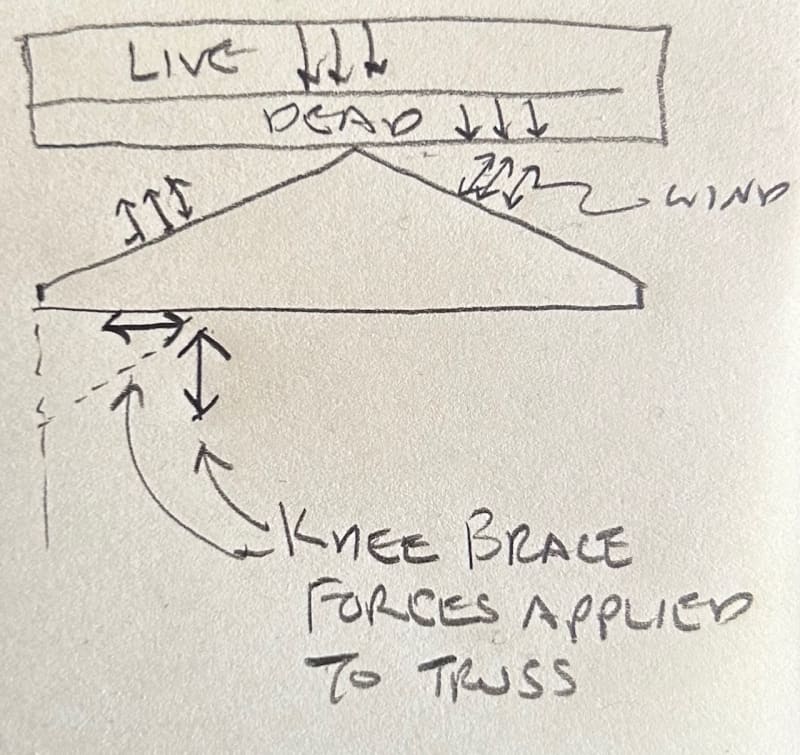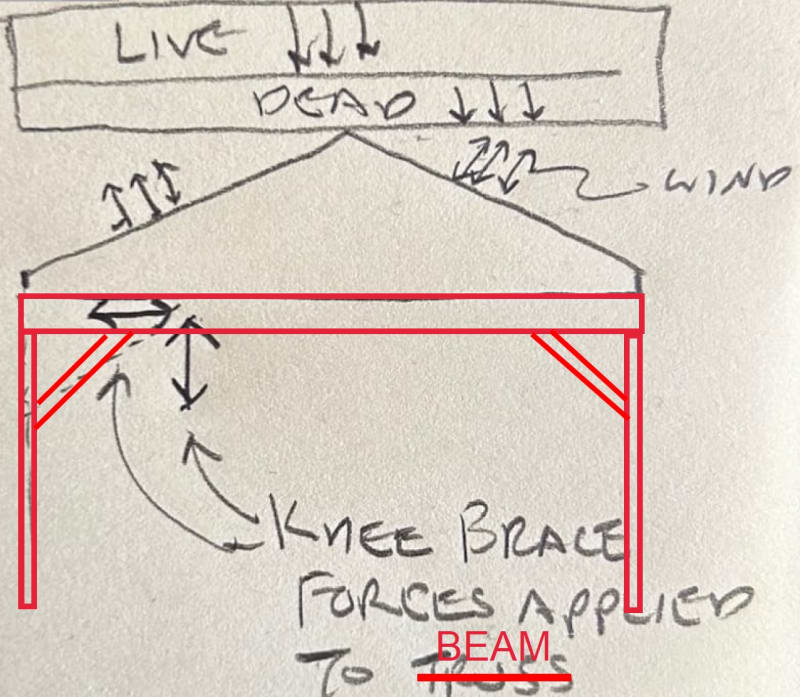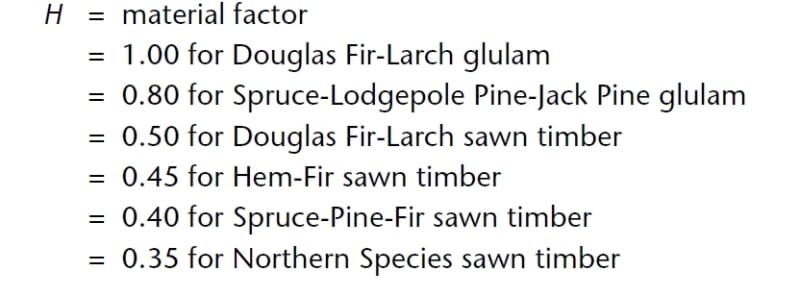TRAK.Structural
Structural
Hi All,
Working on an open pavilion/gazebo type project and need some opinions on a potential option I am considering for a lateral system. Generally the structure will be 30' x 24' in plan and approximately 9' clear height to the underside of perimeter beams and framed with treated wood post and beams. The roof is a simple gable with the ridge parallel to the 30' dimension. No heavy timber detailing with tenons, dowels, etc. just metal connectors, and fasteners. The client wants a clear-span throughout the central area under the structure (24' span) so we have agreed on using wood roof trusses to make this span. Considering lateral loads perpendicular to the ridge, I can use knee-frames at the two ends of the structure with a column that splits the 24' dimension. However, in the center of the structure (where I can't have any interior cols) I am finding that cantilever columns don't provide enough drift control for my comfort. I am considering trying to specify wood trusses aligning with the columns that would be connected to a knee brace and create a truss "moment frame" (see attached).
1. Is this a bad idea in general? Are there any major pitfalls or known issues with this approach?
2. Will a truss supplier/engineer even be able/willing to go along with this and design to provide the required resistance at the ends to create the "moment frame"
3. Any ideas on a simple yet reasonable way to estimate the required force couple at the col-truss connection?
Open to other ideas on lateral systems for loading in this direction. Post base connectors providing enough moment resistance is another issue that has led me to where I am; I have seen the Simpson and Sturdi-Wall products but the capacities and rotational stiffnesses are not great.
Working on an open pavilion/gazebo type project and need some opinions on a potential option I am considering for a lateral system. Generally the structure will be 30' x 24' in plan and approximately 9' clear height to the underside of perimeter beams and framed with treated wood post and beams. The roof is a simple gable with the ridge parallel to the 30' dimension. No heavy timber detailing with tenons, dowels, etc. just metal connectors, and fasteners. The client wants a clear-span throughout the central area under the structure (24' span) so we have agreed on using wood roof trusses to make this span. Considering lateral loads perpendicular to the ridge, I can use knee-frames at the two ends of the structure with a column that splits the 24' dimension. However, in the center of the structure (where I can't have any interior cols) I am finding that cantilever columns don't provide enough drift control for my comfort. I am considering trying to specify wood trusses aligning with the columns that would be connected to a knee brace and create a truss "moment frame" (see attached).
1. Is this a bad idea in general? Are there any major pitfalls or known issues with this approach?
2. Will a truss supplier/engineer even be able/willing to go along with this and design to provide the required resistance at the ends to create the "moment frame"
3. Any ideas on a simple yet reasonable way to estimate the required force couple at the col-truss connection?
Open to other ideas on lateral systems for loading in this direction. Post base connectors providing enough moment resistance is another issue that has led me to where I am; I have seen the Simpson and Sturdi-Wall products but the capacities and rotational stiffnesses are not great.



